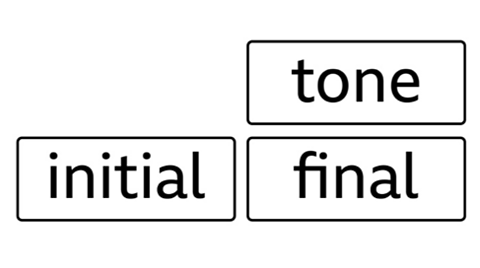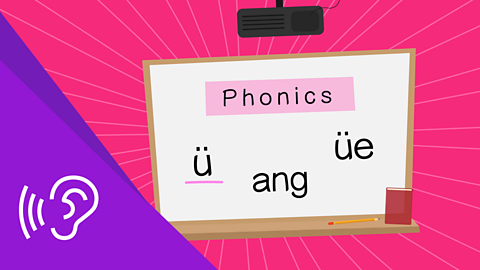
What are finals in Mandarin?
Mandarin characters don’t tell you how to pronounce a word.
Pinyin was invented to help those learning Mandarin with pronunciation - Check your connection, refresh the page and try again. pīn yīn literally translates to ‘spell sound’.
As shown, the sound of a character consists of an initial, a final and one of four tones or a neutral tone.
Finals are the second part of a mandarin syllable and may consist of one or more vowel sounds.
Some characters might not have initials, but all of them have finals.

How do you pronounce finals in Mandarin?
Once you know the sound of each vowel, you can figure out the sounds of the finals.
a - Check your connection, refresh the page and try again. mǎ (horse)
o - Check your connection, refresh the page and try again. wài pó (grandmother on mother's side)
e - Check your connection, refresh the page and try again. chē (vehicle)
i - Check your connection, refresh the page and try again. sì (four)
u - Check your connection, refresh the page and try again. wǔ (five)
ü - Check your connection, refresh the page and try again. nǚ hái (girl)
ai - Check your connection, refresh the page and try again. nǎi nai (grandmother on father's side)
ei - Check your connection, refresh the page and try again. mèi mei (younger sister)
ui - Check your connection, refresh the page and try again. suì (years old)
ao - Check your connection, refresh the page and try again. māo (cat)
ou - Check your connection, refresh the page and try again. gǒu (dog)
iu - Check your connection, refresh the page and try again. jiǔ (nine)
ie - Check your connection, refresh the page and try again. jiě jie (older sister)
üe - Check your connection, refresh the page and try again. yuè liang (moon)
The two dots of ‘ü’ are removed when together with the ‘j’, ‘q’, ‘x’ and ‘y’ initials, but the pronunciation remains the same
er - Check your connection, refresh the page and try again. èr (two)
an - Check your connection, refresh the page and try again. sān (three)
en - Check your connection, refresh the page and try again. chèn shān (shirt)
in - Check your connection, refresh the page and try again. gāng qín (piano)
un - Check your connection, refresh the page and try again. chūn tiān (Spring)
ün - Check your connection, refresh the page and try again. yún (cloud)
The two dots of ‘ü’ are removed when together with the ‘j’, ‘q’, ‘x’ and ‘y’ initials, but the pronunciation remains the same
ang - Check your connection, refresh the page and try again. yáng (sheep)When two different materials rub against each other and they become electrically charged. For example, rubbing a balloon on your head or bits of ice bumping together inside a cloud.
eng - Check your connection, refresh the page and try again. lěng (cold)
ing - Check your connection, refresh the page and try again. diàn yīng (movie)
ong - Check your connection, refresh the page and try again. lóng (dragon)
Did you know?
For many Mandarin sounds, once the pronunciation of their initials and finals is known, the pronunciation of the full word can be figured out by combining the two with their tone, for example:
Initial - j
Final - i and ao
Tone - v (down then up)
Initial - d
Final - u and an
Tone - v (down then up)
Initial - ch
Final - ang
Tone - ´ (rising)
SATs preparation resources. activity
Get ready for the SATs papers with videos, activities, quizzes and games to refresh your knowledge and practise your skills.

More on Phonics
Find out more by working through a topic
- count2 of 3
